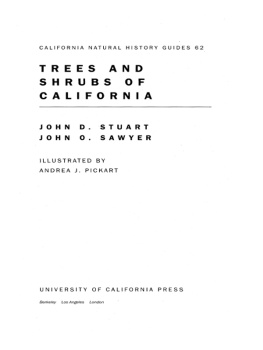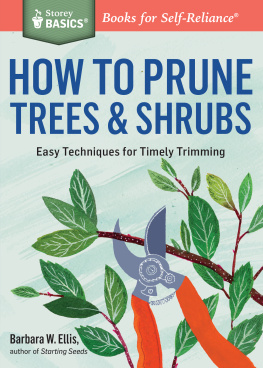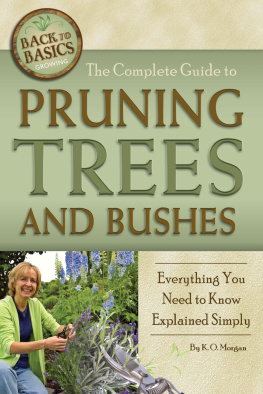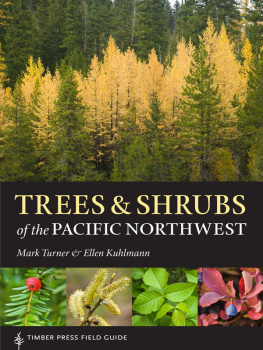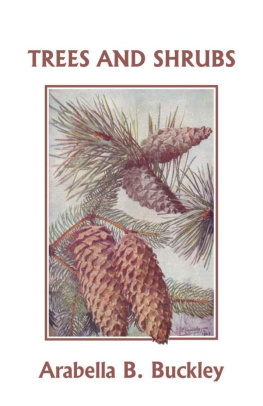The publisher gratefully acknowledges
the generous contribution to this book
provided by the Richard and Rhoda Goldman Fund.
C A L I F O R N I A N A T U R A L H I S T O R Y G U I D E S 62
T R E E S A N D
S H R U B S O F
C A L I F O R N I A
J O H N D. S T U A R T
J O H N O. S A W Y E R
ILLUSTRATED BY
ANDREA J. PICKART
UNIVERSITY OF CALIFORNIA PRESS
Berkeley Los Angeles London
The University of California Press
wishes to dedicate this book to
the memory of Robert Ornduff,
1932-2000.
University of California Press
Berkeley and Los Angeles, California
University of California Press, Ltd.
London, England
2001 by the Regents of the University of California
2001 by Andrea J. Pickart for the drawings
Photo credits: Plates 3, 6, 7, 8, 9, 10, 15, 17, 18, 22, 29, 30, 31, 38, 39, 40John D. Stuart; Plates 1, 2, 4, 5, 12, 13, 16, 19, 20, 21, 23, 24, 25, 27, 28, 33, 34, 35, 37John O. Sawyer; Plates 11, 14, 26, 32, 36Andrea J. Pickart
Library of Congress Cataloging-in-Publication Data
Stuart, John David.
Trees and shrubs of California / John D. Stuart, John O. Sawyer; illustrated by Andrea J. Pickart.
p. cm. (California natural history guides ; 62)
Includes bibliographical references (p.) and index.
ISBN 978-0-520-22110-9 (pbk. : alk. paper)
1. TreesCaliforniaIdentification. 2. ShrubsCaliforniaIdentification. 3. TreesCaliforniaPictorial works. 4. ShrubsCaliforniaPictorial works. I. Sawyer, John O., 1939-. II. Title. III. Series.
QK149.S73 2001
582.16'09794dc21 00-025834
Manufactured in China
10 09 08 07
10 9 8 7 6 5
The paper used in this publication meets the minimum requirements
of ANSI/NISO Z39.48-1992 (R 1997) (Permanence of Paper). 
To Mary, Jane, Pete, Danny, Robbie, and David
PLATES
following page 214
PREFACE
This manual can be used in the field, office, or home. Our intended audience is amateur and professional botanists, natural resource professionals, students, and other people who have an interest in the trees and shrubs of California. Our purpose was to produce an easy-to-use, portable manual of California trees and shrubs. Essentially, all native California tree species and most common shrub species are in this book. We have not, however, included every shrub species, as there are simply too many for a compact guide. In some instances, we treat 1 or 2 species as representative of a genus, rather than describe every species. Among large genera, we have included the more common species; for example, 13 of the 56 manzanita species in California, 17 of the 43 ceanothus species, 13 of the 30 currant and gooseberry species, and 13 of the 30 willows. In general, the book has relatively complete coverage of the common shrubs found in forests, woodlands, and chaparrals, but less complete coverage of the desert scrubs.
We have tried to make our book a user-friendly manual with minimal technical nomenclature, one that employs more familiar terms whenever possible in the dichotomous keys and descriptions. Unavoidable jargon is defined in the glossary.
ACKNOWLEDGMENTS
We are pleased to recognize Jim Andre, Nona Chiariello, R. Jane Cole, Peter Jain, Jim Rorabaugh, Mary Stuart, Danny Stuart, Robbie Stuart, and Robin Wills for their help in collecting plant specimens; Marian Perry, Maralyn Renner, and Mary Stuart for their reviews; and Jennifer Key, Tom Mahony, Steve Steinberg, and Tom Voorhees for help with computer-generated maps. Our ecological sections and our maps are adapted from ecological-unit maps produced by the USD A Forest Service and the Natural Resource Conservation Service. In particular, we used data from the map entitled Ecological Units of California: Subsections (August 1994), compiled by C. B. Goudey and D. W. Smith and available from the Pacific Southwest Region of the USDA Forest Service in San Francisco, California.
INTRODUCTION
HOW THE BOOK IS ORGANIZED
Conifers and broadleaved trees and shrubs are treated separately in this book. Each group has its own set of keys to genera and species, as well as plant descriptions. Plant descriptions are organized alphabetically by genus and then by species. In a few cases, we have included separate subspecies or varieties. Genera in which we include more than one species have short generic descriptions and species keys. Detailed species descriptions follow the generic descriptions. A species description includes growth habit, distinctive characteristics, habitat, range (including a map), and remarks. Most species descriptions have an illustration showing leaves and either cones, flowers, or fruits. Illustrations were drawn from fresh specimens with the intent of showing diagnostic characteristics. Plant rarity is based on rankings derived from the California Native Plant Society and federal and state lists (Skinner and Pavlik 1994).
Two lists are presented in the appendixes. The first is a list of species grouped by distinctive morphological features. The second is a checklist of trees and shrubs indexed alphabetically by family, genus, species, and common name.
CLASSIFICATION
To classify is a natural human trait. It is our nature to place objects into similar groups and to place those groups into a hierarchy. Biologists group plants by morphological and genetic characteristics. An example of a widely accepted taxonomic hierarchy is found in . This is not a static classification, and modifications are proposed based on new morphological and genetic information.
| TABLE 1 | CLASSIFICATION HIERARCHY OF A CONIFER AND A BROADLEAVED TREE |
| Taxonomic rank | Conifer | Broadleaved tree |
| Kingdom | Plantae | Plantae |
| Division | Pinophyta | Magnoliophyta |
| Class | Pinopsida | Magnoliopsida |
| Order | Pinales | Sapindales |
| Family | Pinaceae | Aceraceae |
| Genus | Abies | Acer |
| Species epithet | magnifica | glabrum |
| Variety | shastensis | torreyi |
| Common name | Shasta red fir | mountain maple |
Taxonomists often use intermediate ranks such as tribe or subgenus to organize complexity in large families and genera. Our book has occasional references to ranks below genus. The classification of lodgepole pine (see ) serves as a good example of ranks below genus.
NOMENCLATURE
The rules and procedures for naming plants can be found in The International Code of Botanical Nomenclature (Greuter and others 1994). The valid code is based in part on the principles that names reflect the earliest published description, that there can be only one correct name for a plant, and that scientific names are in Latin.
Species names are made up of two parts, the genus name and the species epithet. It is incorrect to use only the species epithet, since little information is gained from it alone. The species epithet menziesii, for example, is used for Douglas-fir (Pseudotsuga menziesii) and Pacific madrone (Arbutus menziesii). The genus name and species epithet are normally italicized or underlined. The first letter of the genus is always capitalized and the epithet, subspecies, and variety names are lowercased irrespective of source. Roman type is used when writing the names of all ranks higher than genus, the author's name (i.e., the name of the botanist who first formally described the plant), and the abbreviations for subspecies (ssp. or subsp.) and variety (var.). When writing about a species, it is a convention to abbreviate that species' name after the first instance, giving the first initial of the genus name rather than rewriting the entire name, as long as the discussion includes no other genus that begins with the same first letter. The plural of

